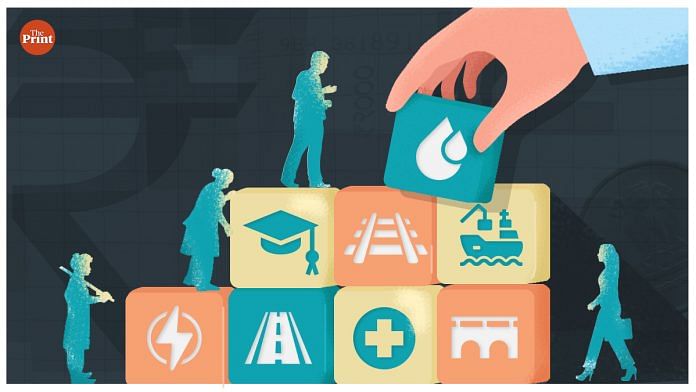India’s governments at the Centre and in the states are not the world’s biggest spenders. In many regions, governments have been spending more in relation to their country’s gross domestic product (GDP) — the advanced economies most of all, but also Latin America, the economies of Central and East Europe, and those in Central and West Asia.
But governments in India are not slouches when it comes to spending.
According to the numbers in the International Monetary Fund’s World Economic Outlook, Indian governments spend about 28 percent of GDP at the all-India level. That is more than in many of the economies in Southeast Asia, as also in Sub-Saharan Africa (which is to be expected). India also spends much more than South Asian neighbours like Sri Lanka and Bangladesh, again in relation to GDP.
What are the results of such spending?
Bangladesh, for instance, has government expenditure that is barely half India’s, at 14.5 percent of GDP, but it has better life expectancy and more years of schooling. It has also more or less caught up with India on per capita income.
Southeast Asian economies like Malaysia, Thailand, and Vietnam also do better on health and education despite their governments spending a smaller component of GDP. These and several other countries also have lower fiscal deficits and mostly have lower public debt — Bangladesh’s is half India’s 83.2 percent, and Vietnam’s is even lower.
Nor can it be said that India’s greater spending has delivered better infrastructure. How does one explain this?
One answer is that percentages can mislead. A higher percentage of a lower GDP per head could translate into less absolute spending per head than a lower percentage of a much greater GDP, again per capita.
So, India could have a bigger government relative to its GDP, yet spend less per head than the higher-income countries of Southeast Asia — and therefore deliver inferior outcomes on health and education. Bangladesh is the obvious exception for spending less per head and still delivering better outcomes.
Also read: PM Modi’s idea of Bharat goes beyond Lutyens makeover, challenges ‘European Enlightenment’
But it is also true that where governments in India have provided services of various kinds (schooling, medical care, etc), they have invariably been sub-standard.
So, it is worth examining the Prime Minister’s comments on making government programmes more people-centric rather than government-centric (translation — better delivery with less leakage). More recently, in the context of the G20 summit, Narendra Modi also argued for a shift from a GDP-centric view to a human-centric view.
To his credit, PM Modi has been doing what he now advises in terms of delivering people-related basics — universalising the supply of electricity and tap water, giving clean cooking fuel to housewives at a subsidised price, accelerating government-subsidised house construction, providing lavatories, making available free grain and free medical insurance, and dishing out cash to farmers.
Remarkably, while doing this, he has also increased government investment, most notably in the transport infrastructure. For the future, he has launched an expansive incentive programme to encourage investment in chosen manufacturing sectors.
It is too early to reach conclusions about the social and economic outcomes from this approach, in part because of the government statistical system (no census, no consumption numbers, etc), but also because the more recent initiatives are still to play out.
However, one problem is already visible — general government (Centre and states) revenue as a share of GDP has seen a slight drop over the last several years, while expenditure in relation to GDP has gone up by about a percentage point compared to a decade ago.
Consequently, the deficit has grown, as has public debt — some of it doubtless on account of Covid. The rating agency Fitch has mentioned the fiscal situation as a key issue.
If both deficit and debt are to be brought down to the levels in comparable economies without squeezing spending, the painless way is through rapid economic growth, which delivers more GDP per head.
And however people-centric governments want to be, more money for social investment and welfare packages will become available only by refocusing expenditure, or (again) through economic growth.
Southeast Asian economies benefited because they did both and are better placed today. Growth matters. Governments should be more human-centric but also GDP-centric.
By special arrangement with Business Standard.
Also read: Though gaining prominence among middle-rung global powers, India has work to do to climb further up



